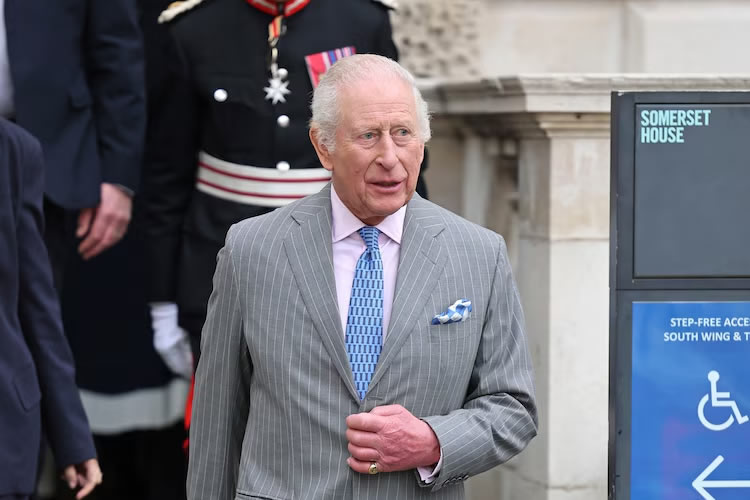
It’s been a little over a month since Joe Biden became the presumptive Democratic presidential nominee, and what a month it’s been.
Or rather, what a month it hasn’t been.
The race between Biden and President Donald Trump ought to be basically underway by now, but the horses seem unsure of how to get out of the stable, particularly in the case of Biden, who has been sheltering in place at home since March.
While he has held consistent leads in most national and swing-state polls, they have not been altogether comfortable ones. And even as the public’s faith in Trump’s handling of the coronavirus pandemic steadily erodes, Biden has struggled to establish a narrative that resonates with persuadable voters or motivates those on the left.
A CNN poll released Wednesday found Biden leading the president by 5 percentage points nationwide but trailing by 7 points among voters in crucial battleground states. In that poll — conducted a week after Biden publicly denied allegations of sexual assault, to which he had initially hesitated to respond — the former vice president’s support among female voters and college graduates was badly diminished from recent months.
Still, most swing-state polls have shown Biden in the lead, and Trump’s persistently low approval rating bodes poorly.
“You have a president who hasn’t had a day with an approval rating over 50%,” said Joel Benenson, a veteran Democratic pollster, pointing to Gallup figures. “So you’re looking at a campaign that’s going to be a referendum on Donald Trump, and so far Trump is losing.”
But for some Democrats, the results of the CNN poll again raised the specter that Biden could win the popular vote but lose the Electoral College, as Hillary Clinton and Al Gore both did.
The Enthusiasm Gap
Other recent surveys have been somewhat kinder to Biden than the CNN poll. A Monmouth University survey conducted earlier this month found him leading Trump by 9 points nationwide and largely holding onto his margins among women and well-educated voters. In a Marquette University Law School poll of Wisconsin voters released this week, Biden’s 3-point edge over Trump was unchanged since March.
But even in that Monmouth poll there were signs that his virtual campaign has yet to instill passion in crucial parts of his coalition. Among liberal voters, 33% said they were less enthusiastic than usual about voting in this year’s election. Voter enthusiasm ran higher among conservatives; just 12% of those voters said they were less enthusiastic than in previous years.
The CNN poll painted a similar picture, but more starkly: Four in five Republican voters said they were quite enthusiastic about voting this year; just 56% of Democratic voters said the same.
Of course, it is still early to draw definitive conclusions from these numbers: Trump has been in office for over three years, and he continues to address the public in news conferences multiple times a week, while Biden’s general-election campaign has hardly gotten off the ground. That is precisely what worries some Democratic observers.
The Pandemic Problem
In the five weeks since Biden became the lone remaining Democratic presidential candidate, all but sealing his nomination, Americans’ faith in Trump’s handling of the coronavirus has steadily sunk. In this week’s CNN poll, Americans disapproved of his pandemic response by a 13-point margin.
But Biden has largely stayed outside the spotlight in recent weeks — at the very moment when he might otherwise be expected to grab headlines with attacks on Trump’s leadership and examples of how he would confront the pandemic.
In the CNN poll, voters were just 6 points more likely to say Biden would do a better job than Trump at responding to the virus outbreak. A month ago, the difference was 9 points in Biden’s favor.
Asked about the economy, voters told CNN that Trump was their preferred steward by a margin of 12 points. A month ago, Trump led in this regard by just 4 points.
The Tara Reade Allegation
In recent weeks Biden has been thrown off balance by the allegation of sexual assault lodged against him by Tara Reade, who briefly worked in his Senate office in the early 1990s.
In the Monmouth poll, 46% of Democratic voters said either that Reade’s accusation was probably true or that they weren’t sure. Among independent voters, nearly 4 in 5 selected one of those options; just 22% of independents said they didn’t believe the allegations.
The CNN poll found that Biden’s net favorability rating among all Americans had sunk by 5 points since March — a possible consequence of the Reade accusation because Biden has not received much negative coverage on other fronts over the past few weeks. Looking only at registered voters, the drop in his favorability was more severe: to minus 5, from plus 3 in the March CNN poll. That dip was about even across women and men. (Monmouth also found positive views of Biden dropping slightly since March, though to a lesser degree.)
But in terms of actual voting preference, Biden appeared to have taken a particular hit among women and white college graduates, according to CNN. In head-to-head matchups with Trump, his lead shrank by half among women since last month — and even more among voters with a college degree. He now leads the president by 14 points among women and by just 4 points among white college grads, according to the CNN poll.
The Shrinking Middle
Trump’s favorability rating has remained underwater in almost every major poll since the beginning of his presidency. It’s a vulnerability that Biden will be eager to exploit, even as he struggles to maintain a positive image of his own.
The recent Monmouth poll had signs of hope for Biden in this regard: Among voters who expressed unfavorable views of both him and Trump, Biden led the president by a significant margin. That would represent a reversal from 2016, when Trump beat Clinton among voters with negative views of both candidates.
The share of voters expressing negative views of both candidates is much smaller this year than it was in 2016. Now more than ever, there are strong and stable bases of support on either political side: In the CNN poll, 95% of Democratic voters said they would support Biden, and the same share of Republicans said they would back Trump.
Even those individuals who identify as political independents tend to lean strongly toward one party or the other — and to hold adamant feelings about Trump’s leadership — meaning that there are vanishingly few voters who truly ride in the middle lane of American politics.
Across most general-election polls this year, the pool of voters saying they are undecided looks much smaller than it was in 2016.
Still, the Monmouth poll found that Biden held a 16-point margin in the counties where Clinton and Trump ran nearest to even in 2016, a sign that he might have an advantage among the small slice of the electorate that is genuinely persuadable. In Monmouth’s poll just before the 2016 election, Clinton led by about half that much among voters in similarly competitive counties.
“Those counties that are competitive are the ones where voters are much more likely to change their vote from one election to the next,” Patrick Murray, who runs the Monmouth poll, said in an interview. “How they behave from election to election tells us a lot about what’s important to voters.”














+ There are no comments
Add yours